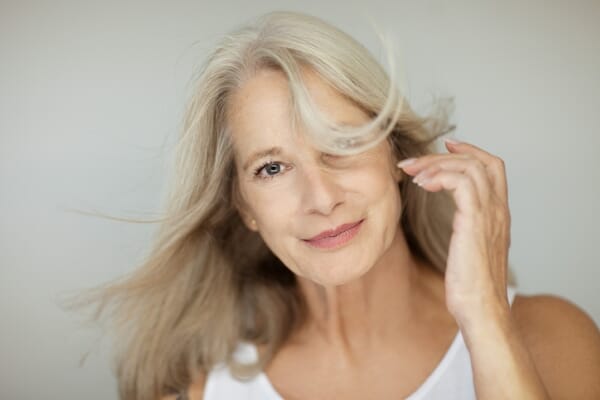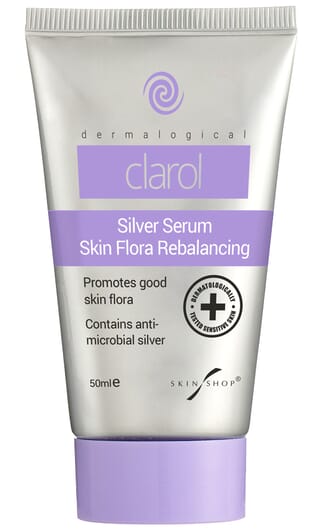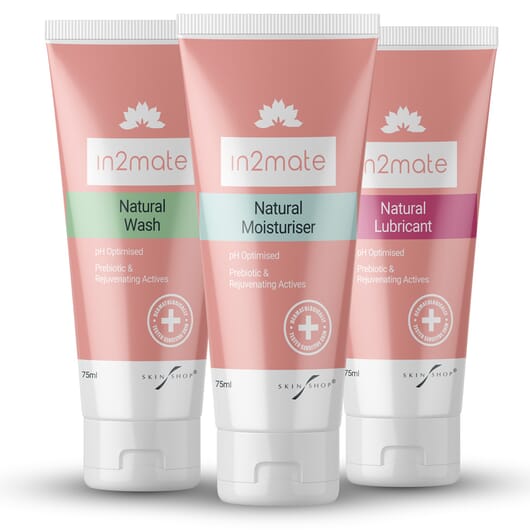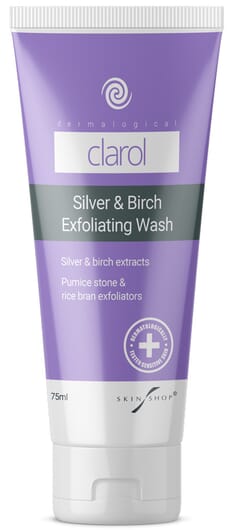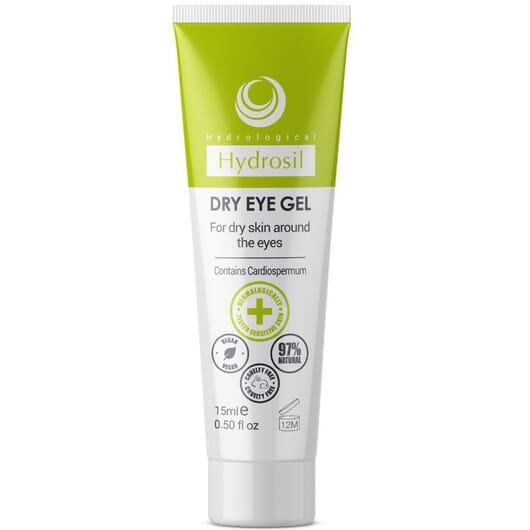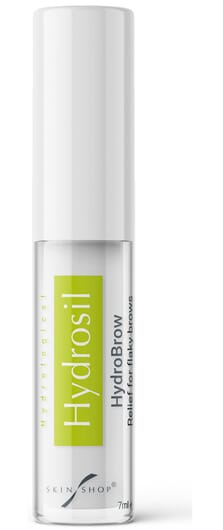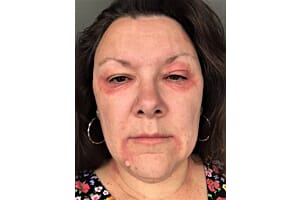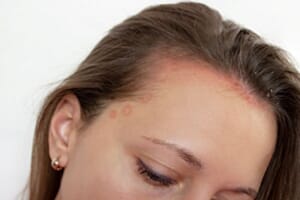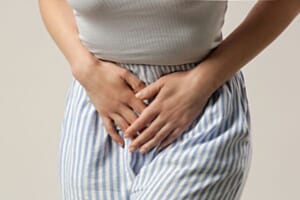When are women officially in menopause? This is the question many women would like to know but too often doctors may not be able to give a definitive or immediate answer without specialist referrals and waiting times.
However, there’s something much closer to home that could be the most accurate barometer to let you now that you have entered menopause – your skin.
Here consultant dermatologist and venereologist Dr Eva Melegh gives five clear signs in your skin that could tell you that you’ve entered menopause.
‘Changes in levels of the female sex hormone oestrogen that happen at the start of menopause are most obviously manifested in the skin,’ says Dr Eva. ‘When certain changes in the skin start to happen and in quite quick succession or at the same time and that have not happened before, this is a fairly accurate sign that menopause has started. These skin signs can occur before more well-documented symptoms like hot flushes or irregular menstruation.’
Dark spots on forehead & cheekbones
The decrease of oestrogen that occurs at the start of menopause can lead to disruptions and ‘clumping’ of production of melanin, which can cause dark spots (age spots) to appear on the skin.

Several of these dark spots can appear quite quickly as the onset of menopause, particularly on the upper part of the forehead and on the cheek area under the eyes and along the outer part of the cheek bones.
What to do about it
Depending on how dark the spots are and how quickly you treat them, some higher strength retinoids (tretinoin) creams might help fade them.
However, the most effective treatments are salon-based laser treatments, freezing (cryotherapy), dermabrasion, microdermabrasion, microneedling, and chemical peels.
Itchy & red skin around the eyes
The steep drop in oestrogen production at the start of menopause causes the skin to quickly become drier and less elastic. While this will happen progressively to all the skin in the facial and neck area over the course of the menopause, often the first sign of it is around the eye area where the skin is particularly thin and fragile.
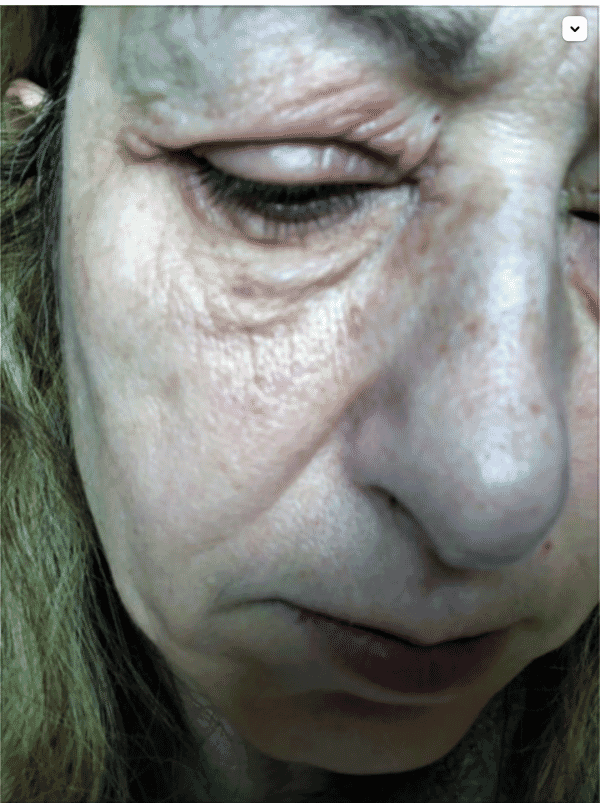
The skin on the eyelids and around the corners and just below the eyes can suddenly become irritated, dry and flaky, often becoming quite red and furious and often mistaken for hay fever when in fact its a sign of manupausal skin.
What to do about it
Typical first point of call treatment for atopic skin flares is steroids, they bring fast and spectacular improvement, but for this very delicate area around the eyes steroids are not recommended for eye eczema or blepharitis.
An effective alternative to steroids for eye eczema or blephariris are phytosterols (which are plant-derived steroid-like components) which are structurally similar to the basis of steroids but gentler which makes them suitable for use around the delicate eye area.
The physosterol Cardiospermum halicacabum has been widely studied for its beneficial effect for use on atopic and reactive skin. Hydrosil Dry Eye Gel is a light eye gel containing Cardiospermum halicacabum.
Jawline Acne
Acne is usually caused by hormonal disruptions such as during puberty and pregnancy. Menopause is no exception, except with menopausal acne its common for it to appear only along the jawline and on the chin area as this is where testosterone-linked acne often occurs.
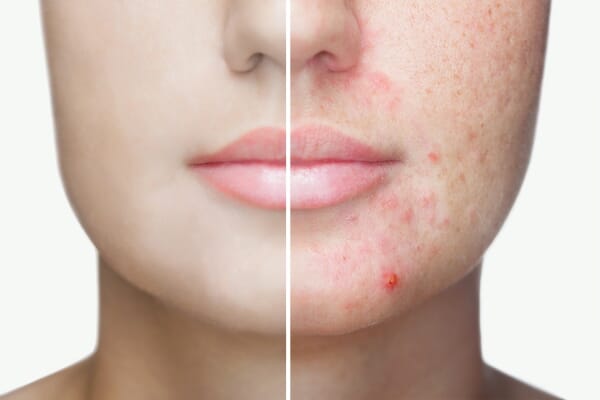
When the two sex hormones oestrogen and in particular progesterone drop or fluctuate during the onset of menopause, testosterone levels can temporarily surge, which is what can cause this tell-tale menopausal acne.
What to do about it
Menopausal acne or adult acne shouldn’t be treated by the same products as for teen acne as menopausal skin is thinner, drier and more sensitive and often can’t tolerate the harsh anti-bacterial agents in acne products aimed at younger skin.
Gentle daily exfoliation of the area is very beneficial for improve skin cell production and cleaning out of the skin pores using an exfoliant that doesn’t contain any antibacterial agents but instead uses natural exfoliating ingredients is preferable for menopausal acne. Retaining moisture and avoiding any risk of skin reaction is crucial when treating menopausal acne, so ideally treatments for this type of acne should be chemical-free and aim to repair skin barrier function and reduce inflammation while at the same time reducing hostile skin bacteria.
Clarol Silver & Birch Exfoliating Wash (with natural birch bark exfoliant) and Clarol Silver Serum both contain a micronized silver ingredient which has a duel action of feeding good skin bacteria to help repair and maintain skin barrier function while starving hostile skin bacteria.
Thicker palms & soles
The skin condition known as Keratoderma Climactericum is characterised by oval-shaped hyperkeratotic patches (which often become itchy and then dry and cracked) quickly develop on the centre of the palms (and then spread outwards) and soles of the feet (especially around the heels.) giving a feeling and appearance of thicker, dryer and paler skin.
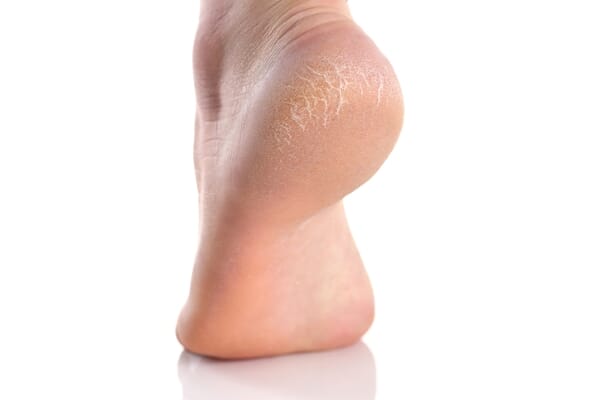
The exact cause of this condition is still unclear, but it is disproportionately associated with women at the onset of menopause, especially in women who are overweight.
What to do about it
Highly hydrating emollients for atopic skin, keratolytic agents (topical treatments that contain Salicylic acid, Lactic acid, alpha hydroxy acids and Propylene glycol), topical retinoids and topical vitamin D can help to relieve this skin condition.
On the heels dermabrasion or skin ‘sanding’ can help remove some of the dead layers of dry skin before treatments are applied.
Vaginal Dryness & Irritation
The other common place for the sharp drop in oestrogen to first manifest itself is in vaginal skin. Contrary to common believe that it’s the vulva that’s most affected (the vulva has less oestrogen receptors), its the skin around the vaginal opening that suffers first and most at the onset of menopause, a condition known as Atrophic vulvovaginitis.
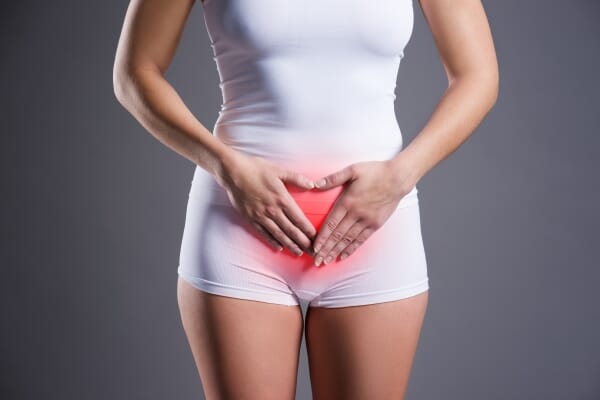
Symptoms include an onset of vaginal itching and tenderness sometimes also accompanied by a burning sensation and painful urination.
What to do about it
Any creams, washes, douches or lubricants containing perfumes or chemicals should be strictly avoided along with abrasive and artificial fabric underwear. Sweat build up in the area from exercise, exertion or hot weather should be rinsed off as soon as possible and underwear changed.
Intimate skincare products that are perfume and chemical free while being moisturising are the most helpful for managing this condition, while vaginal prebiotics that help repair vaginal barrier function can be highly beneficial. In2mate skincare products are free from chemicals and perfumes and contain a special vaginal prebiotic to help rebuild good vaginal skin flora both externally and internally.



